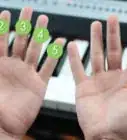wikiHow is a “wiki,” similar to Wikipedia, which means that many of our articles are co-written by multiple authors. To create this article, 11 people, some anonymous, worked to edit and improve it over time.
wikiHow marks an article as reader-approved once it receives enough positive feedback. In this case, 94% of readers who voted found the article helpful, earning it our reader-approved status.
This article has been viewed 251,133 times.
Learn more...
Developed in 1964 by Robert Moog, the modular synthesizer was the first of a generation of electronic musical keyboards, followed in 1970 by the first performance model. Thanks to advances in electronics since then, digital keyboards are now available in a variety of sizes and configurations, with a variety of features to meet the needs of both amateur and professional musicians. Here are the steps in how to buy a keyboard to meet your needs.
Steps
-
1Decide how you intend to use the keyboard. If you're just learning how to play, or if you don't have any serious musical aspirations, you can probably get by with buying a relatively inexpensive (under US $100 new) keyboard. If you're a serious musician or plan on performing publicly, you'll want to buy a more expensive keyboard with a greater number of professional features.
-
2Know the types of keyboards that are available. In addition to Moog, digital keyboards are made by a number of other manufacturers, such as Alesis, Casio, Korg, Roland, and Yamaha. While keyboards offer a number of features, they fall into 1 of several categories, as described below:[1]
- Digital pianos: A digital piano has the same 88-key keyboard as an acoustic upright piano, but it replaces the metal strings and felt hammers with digital recordings of those strings. When pressed, the keys strike electronic contacts that play the corresponding samples. An amplifier replaces the sounding board that causes the strings of an acoustic piano to resonate, making a digital piano more compact than an acoustic piano. Console models have built-in speakers, while digital pianos for the stage are designed to connect to external speakers.
Advertisement -
3Synthesizers: Synthesizers can electronically reproduce the sounds of many different instruments, as well as create electronic sounds musical instruments can't duplicate. More sophisticated synthesizers offer you the ability to program your own sounds and connect to a computer through either Musical Instrument Digital Interface (MIDI) or Universal Serial Bus (USB) ports. (MIDI interfaces also let 2 keyboards connect to each other, enabling you to layer sounds.)
- Workstations: Also called arranger keyboards, workstations are more sophisticated synthesizers that offer music sequencing and recording capabilities in addition to computer interfacing and sound synthesis. These keyboards are most suited for digital music studios.
-
4Consider your present musical knowledge. Some keyboards for home use come with built-in instruction systems, as well as instruction books or software. These built-in systems may include lessons on how to place your fingers on the keys while playing, as well as a number of pre-recorded tunes that can be played while highlighting the keys that correspond to the notes of the song.
- If you hesitate to practice in front of someone, look for a keyboard with a headphone jack so that only you hear your music when you play.
-
5Look at the number of keys on the keyboard. Digital keyboards can have as few as 25 keys or as many as 88. Digital pianos have the full 88 keys of a standard piano keyboard, and most workstations have at least 61 keys or more. Lower-end synthesizers may have as few as 25 keys, although most home-use keyboards come with 49, 61, or 76 keys.
- The more keys, the greater the instrument's range. A 25-key keyboard has only a 2-octave range, while a 49-key keyboard has a range of 4 octaves, a 61-key keyboard has a range of 5, a 76-key keyboard covers 6 octaves, and an 88-key keyboard spans 7. (Each octave includes 7 white and 5 black keys, or 12 chromatic tones.) The larger the instrument, the more room there is for other features.
- The larger the instrument, however, the less portable it is. You may have to sacrifice the 7-octave range of an 88-key keyboard for a smaller unit that you can take with you if you like to jam with friends.
-
6Choose a keyboard with keys that are easy to play. In addition to looking at the number of keys, also look at how easy it is to play the keys without giving yourself painful fingers or carpal tunnel syndrome after playing. Two features to look for when buying a keyboard are touch sensitivity and weighted keys.
- Touch sensitivity means that the strength of the sound is dependent on how firmly you press the keys. On a touch-sensitive keyboard, if you press the keys lightly, the sound is soft; if you hammer the keys, the sound is loud. Touch sensitivity is usually not available on low-end keyboards.
- Weighted keys require you to press them to move them downward, but they come back up on their own faster than unweighted keys.[2] The key weights add weight to the keyboard, making the keyboard cost more and be less portable, but they're easier on your fingers if you plan to play for long stretches at a time.
-
7Evaluate the sound capability. There are 2 main sound capabilities: polyphony and multitimbrality. Polyphony is a measure of how many notes the keyboard can play at 1 time, while multitimbrality is a measure of how many different kinds of sounds the instrument can play at once.[3]
- Lower-end keyboards can play as few as 16 tones at once, while higher-end synthesizers and workstations can play as many as 128.
- Multitimbrality comes into play if you plan to produce music with the keyboard. It's a definite asset in layering multiple sounds for a recording.
-
8Look for ease of use. Presets should be easy to use, and sounds should be logically grouped so they're easy to find and remember. The unit's liquid crystal display (LCD) screen should be easy to read, as well. Good documentation is helpful, but you should not have to consult it every time you want to use the keyboard's most important features.
Community Q&A
-
QuestionIs it fine to buy a keyboard with 41 keys if I'm a beginner?
 Community AnswerI would say that a 72 key piano/keyboard is the best for beginners. I started on one and it gives you the opportunity to mess around with octave playing and just gives you more space in general. I think you'll be cramped on a 41 key keyboard.
Community AnswerI would say that a 72 key piano/keyboard is the best for beginners. I started on one and it gives you the opportunity to mess around with octave playing and just gives you more space in general. I think you'll be cramped on a 41 key keyboard. -
QuestionHow many keys are used in an 8-octave keyboard?
 Community AnswerEvery octave has 7 white keys and 5 black keys. So a 5-octave keyboard will have [(7+5) * 5] + 1 = 61 keys. The last one key is present in all keyboards at the right most end.
Community AnswerEvery octave has 7 white keys and 5 black keys. So a 5-octave keyboard will have [(7+5) * 5] + 1 = 61 keys. The last one key is present in all keyboards at the right most end. -
QuestionI wish to buy a foot pedal for a Yamaha keyboard. I have been told the polarity of the pedal must fit the keyboard, what is this polarity?
 Community AnswerPolarity is just the direction of current when powering the pedal. If the pedal you are buying is manufactured by Yamaha as well, then you shouldn't have any issues.
Community AnswerPolarity is just the direction of current when powering the pedal. If the pedal you are buying is manufactured by Yamaha as well, then you shouldn't have any issues.
References
- ↑ https://www.schoolofrock.com/resources/keyboard/buying-guide-how-to-buy-your-first-keyboard
- ↑ https://thehub.musiciansfriend.com/keyboard-buying-guides/pianos-and-keyboards-how-to-choose
- ↑ https://www.schoolofrock.com/resources/keyboard/buying-guide-how-to-buy-your-first-keyboard
- http://www.childrensmusicworkshop.com/instruments/piano/index.html
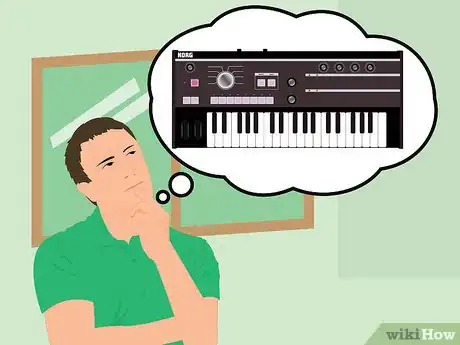
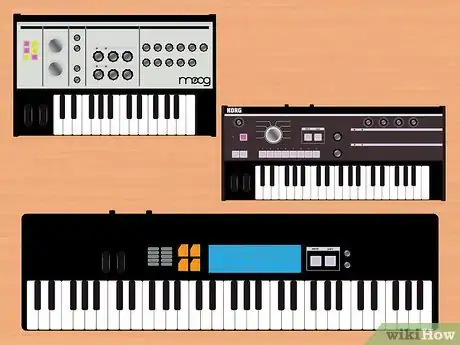

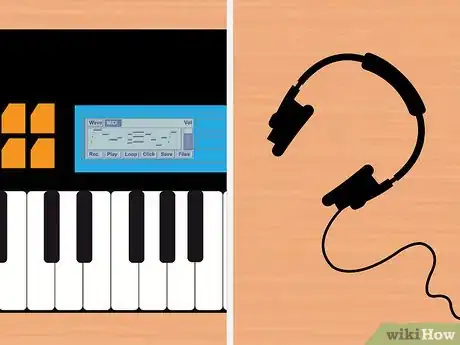
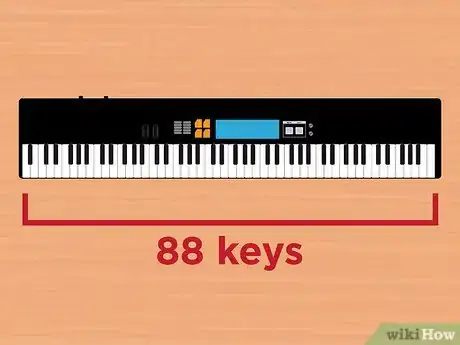
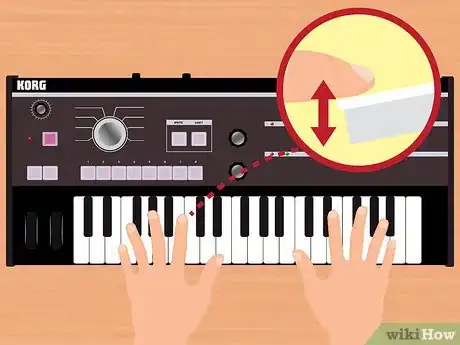
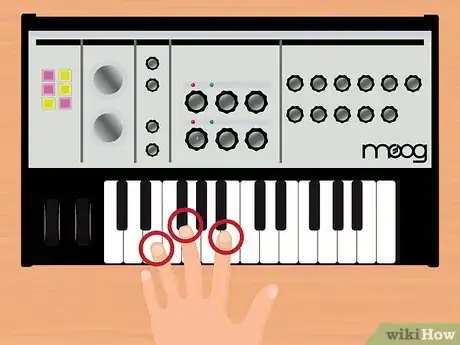
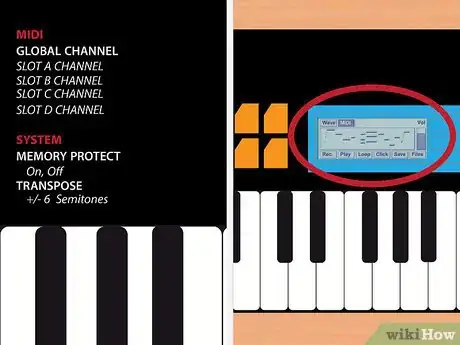
-Step-17-Version-4.webp)
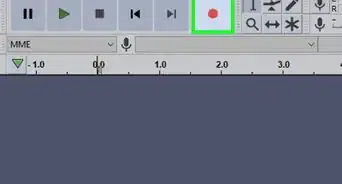



















-Step-17-Version-4.webp)
